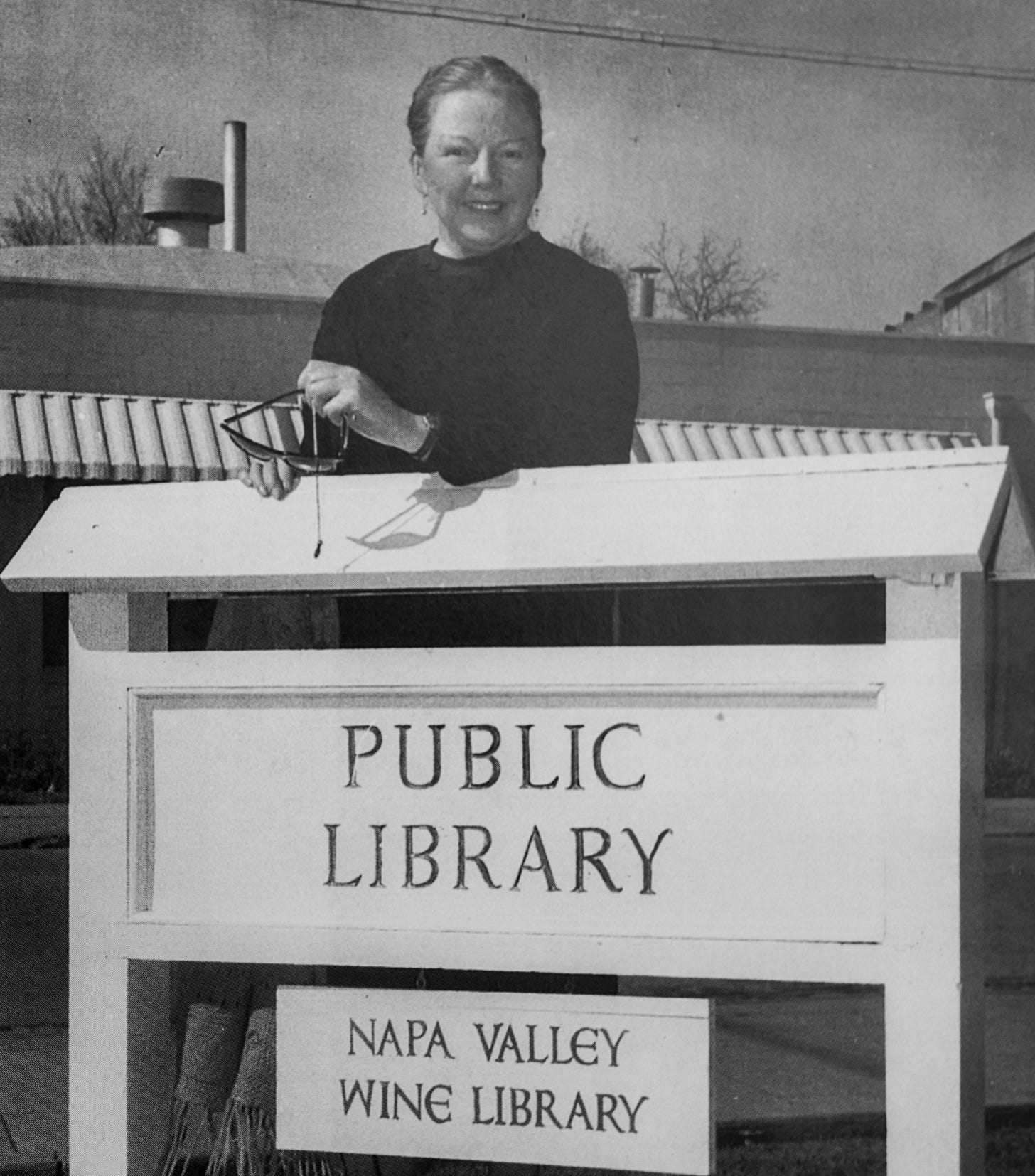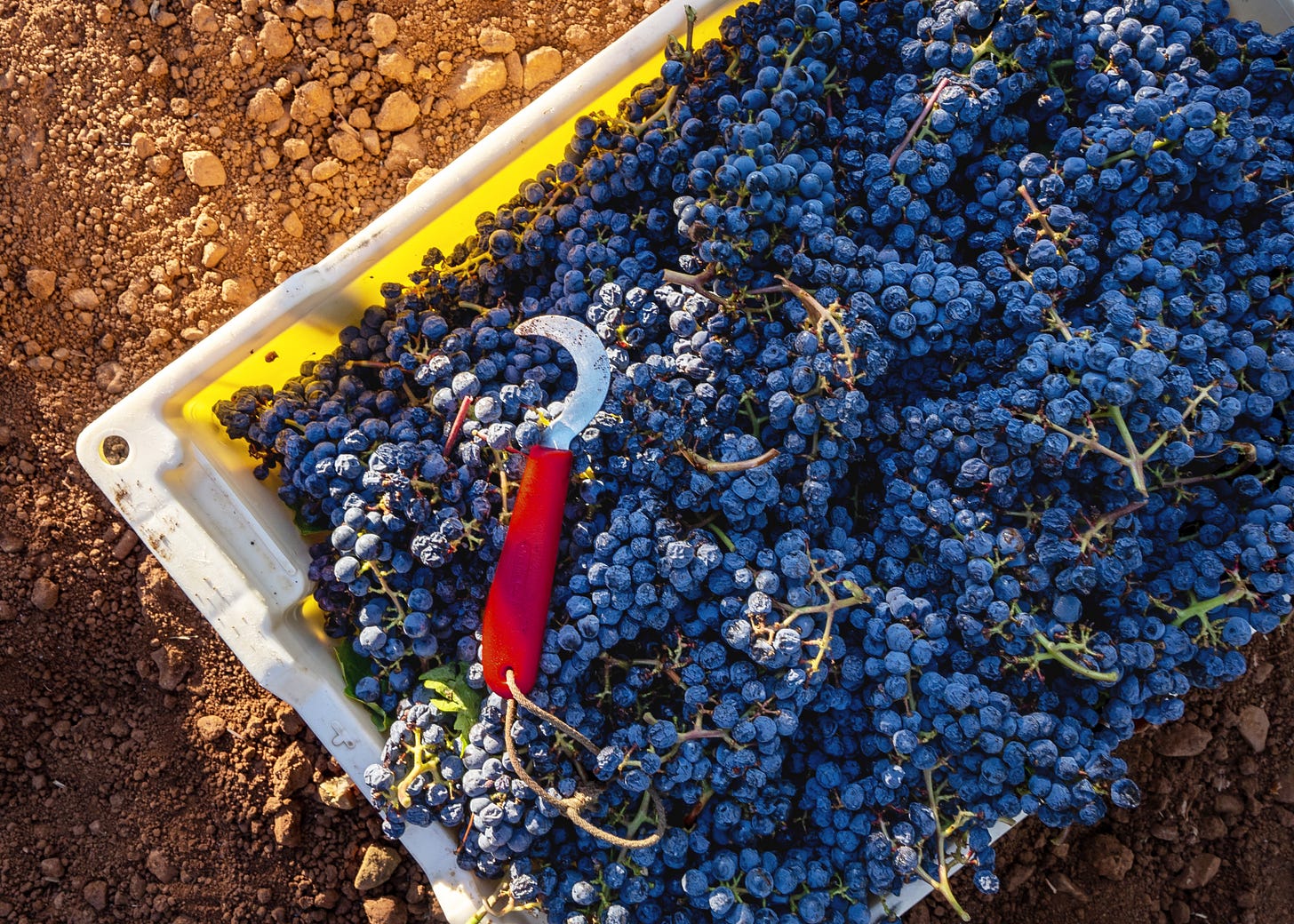NAPA VALLEY, Calif. — When I first moved to Napa Valley 27 years ago, people asked me why I had come. The short answer was that I had been a home winemaker for almost 30 years. It seemed like a natural step, although, ironically, it was moving here that caused me to stop making wine.
My former and now sadly late wife, Teddy, and I moved to Dallas in 1970, when I took a job as the regional editor for McGraw-Hill’s Electronics magazine. I had worked in public relations for high-tech companies, but more relevant were my three years at a ham radio magazine, where I started (graduate work in mathematics notwithstanding) as a debt collector and ended up as editor a couple of years later.
Texas hoped to become an electronics powerhouse with companies such as Texas Instruments, but much of Texas’ technology was military, and those companies didn’t talk to reporters. The editor expanded my territory to include Florida and Colorado, but I still didn’t have enough to do.
Meanwhile, Teddy and I found two huge grapevines in our yard. They reminded us of visits to California wine country, and we decided to make wine. We weren’t too concerned about the grape varieties. One was white, one purple, and we used Fleishman’s yeast to ferment it. It turned out the grapes were Thompson seedless, which is basically tasteless, and Concord, the opposite of tasteless but not in a good way. The wine was terrible but fun at parties served very cold.
After a year the magazine’s Los Angeles editor was “promoted” to New York, and I was a natural replacement for him in LA. We bought a house in Manhattan Beach and acquired a small sailboat. We found that we could buy decent grapes from areas such as Ojai, Temecula and San Bernadino, and we experimented with them and other fresh fruit. I made superb pomegranate wine that won first prize in the SoCal winemaking competition, although the next year the wine was brown and stinky. We became friends with Russ and Michelle Turner, a couple who owned a home winemaking store in Playa del Ray called the Grape Nut, and our wine improved with fine grapes from coastal areas such as Santa Barbara.
We and the Turners attended a Napa Valley Wine Library weekend and learned from the likes of Louis Martini and Bob Trinchero. I also met Dick Sherwin, the owner of Wine World magazine and wrote some articles for him. I interviewed Hans Kornell and Cary Gott at Sterling. Sherwin made us editors of the Purple Thumb for home winemakers, but it didn’t last long. I was offered a job with another electronics magazine in Silicon Valley, and we moved to Los Gatos.

Through all of this we kept making wine, and much of it was quite good. Excellent grapes grow around Silicon Valley and the Santa Cruz Mountains. Meanwhile, the Turners bought a modest home with an acre of grapes on Niebaum Lane in Rutherford, where we joined them to pick grapes and make wine. Russ, a trained accountant, worked in accounting for Christian Brothers and later became the first winemaker for Francis Ford Coppola.
In 1977 I was appointed editor of a magazine called Electronic Business in Boston. It became difficult to make wine since I was living mostly in Boston and only part time in Los Gatos. The marriage ended, and Teddy, who associated winemaking with me, justifiably gave away our equipment.
In 1980, I started a high-tech public relations agency that grew to 55 people. The agency did well, and I still made wine. I left the business and bought a 41-foot sailboat on Antigua in the Caribbean. That was followed by a fifth-floor walk-up on Telegraph Hill while I freelanced for tech and business magazines. Living in the city wasn’t the life for me, however, and I decided to move to the place where I had had so much satisfaction, Napa Valley.
I first looked at downtown Napa, but it was winter and there were sandbags piled in front of the few open businesses. This was in 1997, just before the Napa River flood-control project transformed Napa. Instead, I bought a house on Stice Lane near St. Helena, just across from one of Dario Sattui’s vineyards. I planted 90 Merlot vines — this was before "Sideways" — as well as some Cabernet on highly productive rootstock in an area with a high water table that yielded plate-size leaves good for stuffing dolmades but not for nurturing wine.
That first year I volunteered at the wine auction and met Charlotte Williamson, who owned Dalraddy Vineyard in Chiles Valley. She offered me some zin to make wine, but because it was a commercial vineyard, we got the last grapes picked at almost 29 Brix. It eventually created an unfortified “port” with 17% alcohol and 2% residual sugar.
The next year, 1998, Michaela Rodena let me pick St. Supéry’s demonstration vineyard with the five most popular Bordeaux varieties for a faux Bordeaux. Bob Roumiguiere also gave me some slightly underripe cab from Kelseyville in Lake County. The wine I made from them turned out well.
Meanwhile, I started writing about wine, which meant I got to try a lot of fine wines, but I also learned how demanding it is to make wine like the experts, and I began to question my own skills. I didn’t want to drink my wine — or anyone’s — all the time, so I stopped making wine.
I moved to Napa a few years later. I still drink wine, but I no longer make it. And the next time I leave the Napa Valley, it will be in a box.
If today's story captured your interest, explore these related articles:
Last week
The week was busy at Napa Valley Features. Cynthia Sweeney, the former editor at the Weekly Calistogan, recounted the closing stages of the 144-year-old newspaper, offering a detailed chronicle of its final days. The community also faced the loss of two prominent figures: Ryan Klobas, CEO of the Napa County Farm Bureau, and Linda Manzer from St. Helena. Their contributions to the valley were significant, and their legacies will resonate for years to come.
In other news, Dave Stoneberg shared insights on the transformative power of forgiveness, emphasizing its role in achieving inner peace and fulfillment. John Dunbar provided an excellent summary of the upcoming local primary election, while Virginie Boone brought attention to the environmental initiatives of the Clif Family Winery, highlighting their efforts toward a sustainable future. For those interested in horticulture, Tom Hixson of the Napa County Master Gardeners provided an extensive look into the world of citrus.
The week also saw contributions from new voices. Renowned wine writer Dan Berger discussed the current challenges in wine marketing, including the impact of downward pricing pressures on wine. District 5 Supervisor Belia Ramos presented her case for re-election, addressing the issues and goals for her campaign. Marking International Irish Coffee Day, Andrew Healy offered a fascinating exploration into the history of Irish coffee and its connections to the Bay Area.
Recent reader poll results were also a topic of discussion, revealing public concerns about an economic slowdown, a desire to reduce spending, overreliance on luxury marketing, and the need for more scrutiny and regulation of artificial intelligence.
Next week
Looking ahead, Napa Valley Features has a range of engaging topics lined up. Kathleen Scavone will discuss the various animals commonly seen on nature walks in Napa Valley, offering a glimpse into local wildlife. Focusing on mental well-being, Jeni Olsen will talk about the importance of setting intentions and its impact on mental health.
The arts will also be a focus, with Lisa Adams Walter providing an overview of the 7th Annual Yountville International Short Film Festival. This event promises to showcase a diverse range of short films from around the world.
In a historical context, Dave Stoneberg will present an intriguing analysis of Napa Valley’s crop reports over the past century, offering insights into the agricultural evolution of the region. Dan Berger will return with more expert commentary on the wine industry, continuing to shed light on the complexities and dynamics of wine marketing.
Additionally, the "Under the Hood" series begins next week, exclusively for paid subscribers. This series promises deep dives into various topics that include economics, health and climate, providing in-depth and powerful narratives.
Napa Valley Features remains committed to its subscribers, valuing their support for the ad-free, subscriber-funded model. The team encourages readers to engage with the content through likes, shares and comments, further enriching the community experience.
Paul Franson is the editor of NapaLife, a weekly newsletter that focuses on news and events about food, wine and the arts.
**Introducing "Rupert," a new comic series by Kathleen Scavone, coming to our Sunday E-dition. Enjoy this clever and thoughtful work from a talented artist and writer.









What a wonderful article. Although I left the Valley long before you arrived, I loved hearing about your journey TO the amazing Napa Valley. Your trip through your wine making experiences made me giggle, having a number of friends (outside of the Valley) who have, over the years, dabbled at making wine from their few vines- each incredibly unsuccessful. The Valley is fortunate to have your presence. I hope you will enjoy every moment of living there. You have chosen a wonderful place to live on this planet. Also, I appreciate the inclusion of the photo of my mother and the Napa Valley Wine Library sign many years ago. I am thrilled that the Napa Wine Library continues to both exist and also to provide vast information to those who seek it out!
Paul, I remember your PR firm in Silicon Valley. I think we did cross paths at Televideo and maybe Cornerstone in the 80s-90s. I grew up in St Helena, and my wife and I are spending more time up there these days...